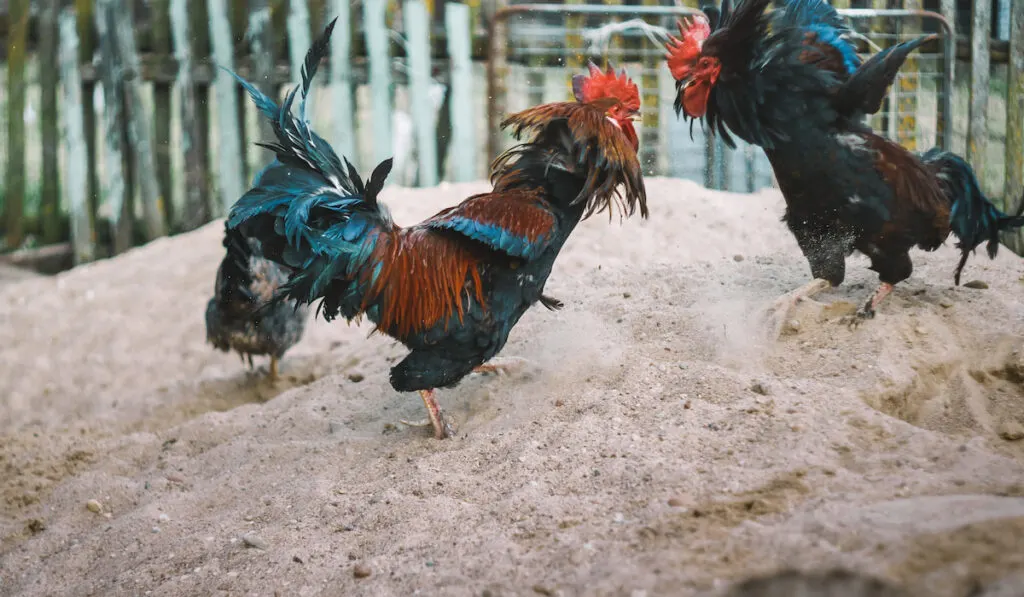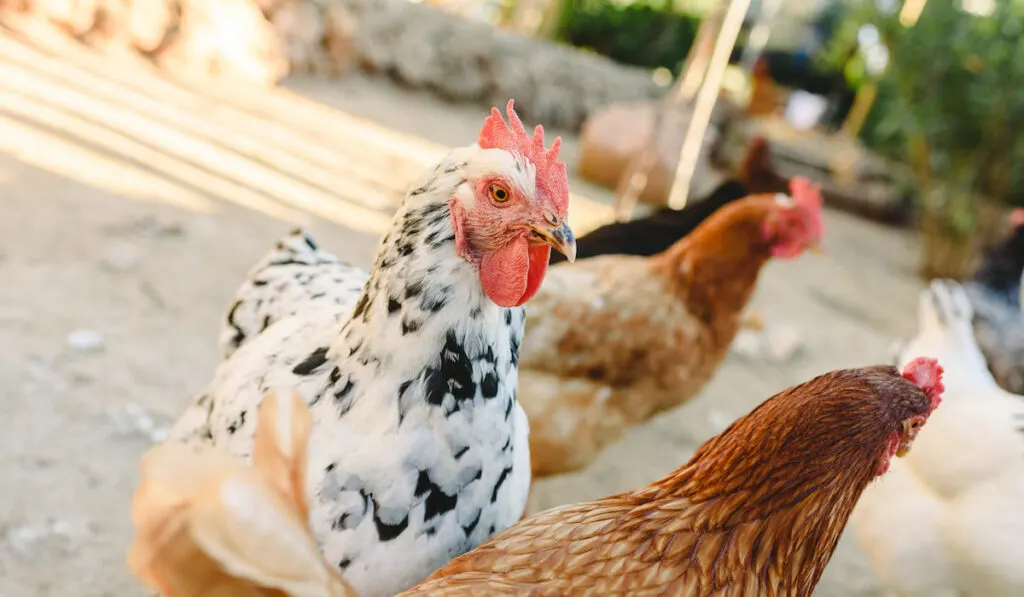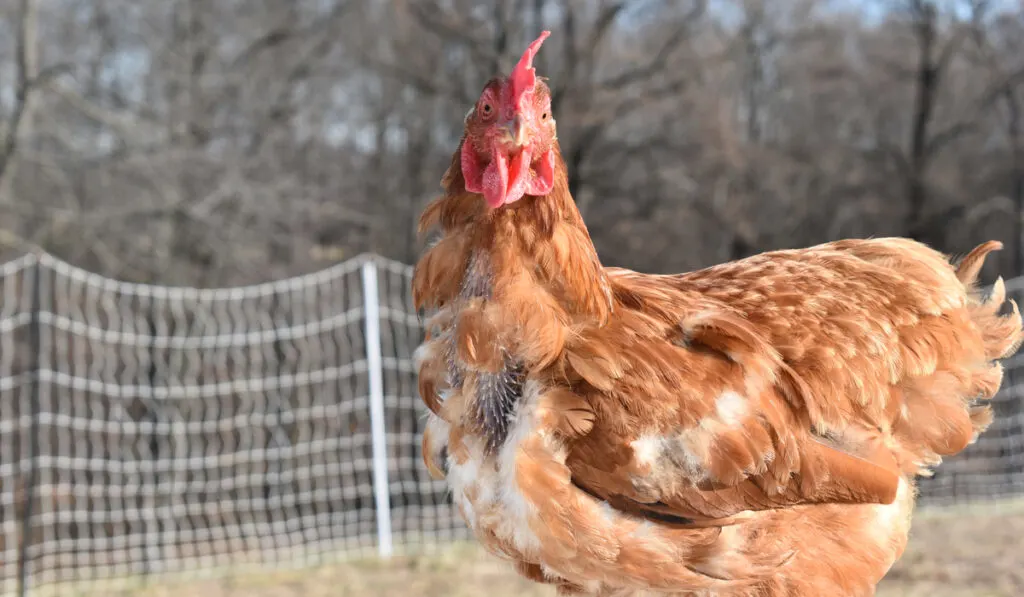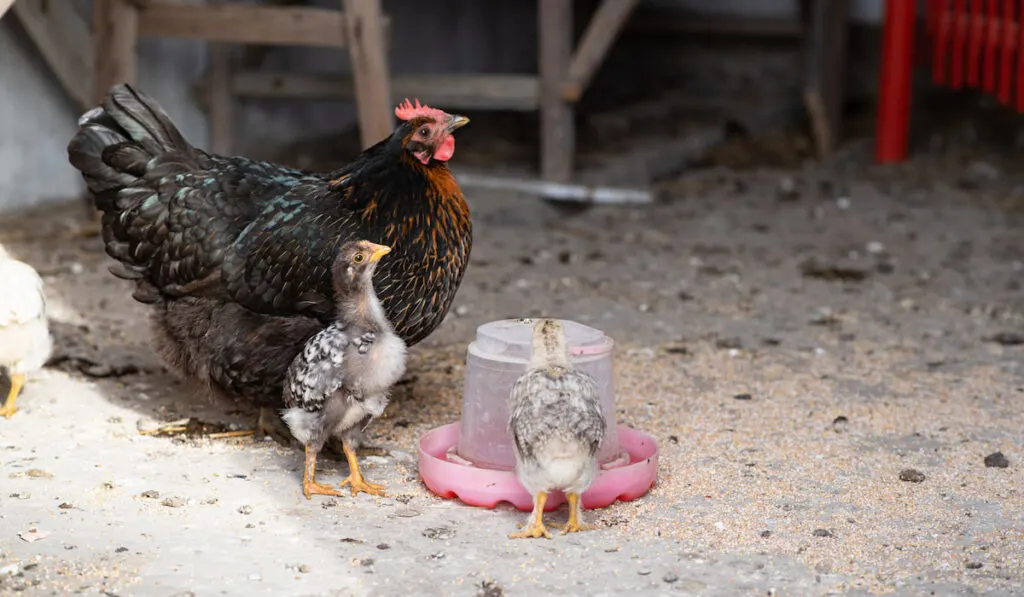When you first got your chickens, you probably did not even know they would molt. The process of molting can be a shock at first, however, there are signs that will help you know what is happening.
When chickens molt, they essentially lose their feathers and grow new ones.
Molting is a natural and necessary process in chickens that can become dangerous for them if they are not well cared for.
It is important to know when your chicken is molting so that you can help it stay healthy.
Table of Contents
Signs to Watch Out For Indicating Molting
Your chicken’s feathers are looking dull.
Shortly before a chicken begins molting, its feathers may start to appear more dull than normal. This is because the process is already in the works and new feathers are on their way.
The old feathers are beginning to be pushed out by the new feathers, so they are beginning to lose their luster. This may be a hard sign to notice on some chickens, but it may be noticeable on those with normally vibrant feathers.
Your chicken has obvious missing feathers.
Once the molting process begins in a chicken, the new feathers will slowly begin to push out the old feathers, leaving small patches of missing feathers. This usually begins on a chicken’s head and neck area and is a clear sign that your chicken may be molting.
As the old feathers are pushed out, new feathers will begin to emerge but they will look like little pins. These are called pin feathers and eventually, they will grow into the normal, large feathers you are familiar with.
Most chickens do not lose all their feathers at one time during the molting process. Instead, it is a gradual process and most often starts at their head and progresses slowly toward their tail.
Your chicken is not laying or sitting on any eggs.
The process of molting requires large amounts of protein for a chicken to grow new feathers. Egg production also requires a lot of protein, so most chickens have to stop laying during the molting process to accommodate this need.
Feathers are mostly made up of protein, so it makes sense why chickens require so much protein to grow new ones. If you notice that your chicken is suddenly not laying eggs anymore, this is a sign your chicken may be molting or about to enter the process.
Your chicken is suddenly mean or more aggressive than normal.

Unfortunately, losing feathers and growing new ones is rather painful and stressful for a chicken. This causes the chicken to become more aggressive than normal while they are molting.
Chickens that are normally very friendly may suddenly develop a mood issue, but do not take it personally. They are experiencing an unknown amount of discomfort and it is understandable that they are a little upset about it.
If you notice that your chicken is acting out of the norm, that is a sign that it may be molting.
Your chicken is trying to eat its feathers.
Chickens that are molting are often searching for protein, so they will try to eat anything they think has protein. This can include their own feathers or even the ones they have already lost.
If you notice that your chicken is suddenly eating eggs or trying to eat its own feathers, your chicken may be molting.
Your chicken is hiding from you and other chickens.
Since molting is a painful process for a chicken, it may not understand exactly what is happening. This can cause the chicken to hide in corners in a futile attempt to escape the pain and discomfort.
A chicken that is normally social but suddenly does not want to come out of the coop may be molting. Check on it and make sure it does not have an injury of some kind that could be the culprit.
Your chicken’s comb is paler than usual.
Near the beginning of the molting process, or right before, you may notice that your chicken’s comb is not as bright red as it normally is. It may appear dull or paler than it normally is.
If you suddenly notice that your chicken’s comb is not as vibrant as it was previously, this is a good sign that your chicken may be molting.
Your chicken is just not acting normal.
While some chickens hide during the molting process, some act wilder than normal, jumping up and trying to fly up to areas they typically do not. This again is another response to the unfamiliar discomfort they are feeling and it is a sign that your chicken may be molting.
Chickens that are acting out of the ordinary often do so because something is plaguing them. In this case, molting can be a somewhat traumatic experience, so they may act a little wilder than normal at times.
Your chicken is pecking other chicken’s feathers.

Often, when chickens are molting at the same time, they may peck at each other’s existing or newly growing pin feathers. You may notice bloody spots and peck marks on some of your chickens that may require medical attention.
Pin feathers are often the targets of other molting chickens, but unfortunately, pin feathers are extremely painful for a chicken. You really do not want the other chickens pecking at them and causing any chicken unnecessary pain.
Questions About Molting
What Does It Mean For A Chicken to Molt?
Molting is a natural process when chickens shed off their existing feathers and begin to grow new ones. Many chickens can go through the molting process with ease and grace, rarely showing any signs besides reduced egg-laying.
Other chickens can have a hard time during the molting process and may struggle at times. The intensity and the progression of molting differ among chickens and their respective breeds.
The molting process in a chicken is slower than you would imagine and can take anywhere from three weeks to six months depending on the chicken. Sometimes, it is such a slow and gradual process that chicken owners do not even notice that it is happening.
How Do Chickens Act When Molting?
Chickens will typically act at least a little differently when molting than they act normally. Molting can cause pain so they can be more aggressive, active, or even shy during the process.
Chickens that are normally friendly and interactive may suddenly become antisocial or aggressive. It is just a natural, albeit frustrating, response to the molting process.
Are Chickens Lethargic When Molting?
Chickens are lethargic during some parts of the molting process, often in the beginning and then throughout when they are experiencing more discomfort than normal. Chickens may rest more and appear more tired when molting because their bodies are working so hard to produce new feathers.
Chickens that are experiencing a fast molt will be more lethargic than a chicken that is experiencing a slower, progressive molt. This is because the faster they molt, the more energy they use up in the process, leaving them tired and lethargic.
Do Chickens Bleed When They Molt?
Chickens normally do not bleed when they molt, however, as their new feathers grow in, they are extremely sensitive and can be easily injured. If their new feathers, called pin feathers, are accidentally hit or intentionally pecked at by other chickens, they will bleed.
When a chicken’s pin feathers get injured and begin to bleed, it can look like its new feather growth is causing the blood loss, but that is not the case. If you see blood on your chicken during the molting process, you should consider sequestering it for the duration of the molt so that it can recover.
What Do Chickens Look Like When They Molt?

Chickens that are going through a molt at a faster pace will often appear thinner and a little rougher than normal as they lose large amounts of feathers. They may appear slightly unwell, however, it is usually just a normal part of the process.
Not all chickens that molt will look rough, though. Chickens that are going through a slow molt may appear almost or completely normal the entire time.
What Age Do Chickens Start Molting?
While baby chickens do go through mini-molts as they grow up, an adult chicken should start the regular molting process between 16 and 18 months old.
Some adult chickens will begin to molt much earlier, however, those tend to be the ones that do not produce many eggs.
Can Chickens Molt Twice in One Year?
Most adult chickens only molt once each year, typically sometime in the fall or late part of summer. Some adult chickens can molt twice in one year if they are forced to do so or if stress causes them to molt.
Severe stress, often caused by new chickens or sudden coop changes, can induce a molt in a chicken, even if they already had one that year. Forced molting can cause multiple molts in one year, but it is highly controversial and not recommended if you want to keep your chicken healthy.
Can You “Force Molt” Chickens?
Some chicken owners and egg producers believe that it is beneficial to force a molt in their chickens to time the molt for when it fits their needs. The only way to force a molt is to intentionally stress out your chicken so much that it begins to molt.
Forcing a molt is not safe for a chicken and can be extremely detrimental to their health and reproductive system. It is not recommended to ever try to “force molt” a chicken.
Allowing a chicken to experience the molting process naturally is the best way to keep your chicken safe and healthy.
7 Ways to Help Your Chicken When It Molts
Chickens that are experiencing a molt often have lowered immune systems because they are a little stressed out from the process. Here are seven ways that you can help your chicken stay healthy when it molts.

- Provide plenty of fresh, clean water – Clean water is a necessity for chickens and this is especially true during the molting process. Their water should be as free of bacteria as possible and readily available to reduce stress and keep them hydrated.
- Make sure they are getting extra protein – Chickens that are molting need extra protein in their diets because they need it to grow their new, strong feathers. Cooked eggs, mealworms, yogurt, and poultry-safe protein supplements are ideal choices for adding protein to a chicken’s diet.
- Limit treats and non-healthy foods – The goal is to make sure they are eating their main food and their protein supplements. You do not want the chickens to fill up on treats first and not eat the food they really need.
- Provide a stress-free environment – Chickens that are molting need a stress-free environment. Do not add any new chickens to their enclosure or other pets near them during this time, just to keep them as happy and healthy as possible.
- Separate injured chickens immediately – If you notice that the other molting chickens are pecking one another, separate them as soon as possible. Molting chickens will sometimes peck the new feather growth on other molting chickens in an attempt to get more protein.
- Provide a safe shelter from the elements – Chickens that are molting need a safe shelter that they can escape the sun and harsh weather while they are missing feathers. Make sure they can always get into the shelter in case they need it any time during the day.
- Watch for signs of illness – Chickens that are molting often look ill simply because they are missing clumps of feathers. It is important, however, to keep an eye on them and watch for signs of actual illness like severe lethargy, lying flat on their sides, or not eating or even drinking at all.
Always consult a veterinarian if you really believe your chicken is sick, not just molting.
Final Thoughts
Molting is an odd process, however, it does explain why some chickens look a little rougher than others at times.
You may think that other chickens are pecking out feathers on a chicken, but it may actually be going through the molting process.
Now you know what other signs to look for and how to keep your chicken safe and healthy throughout the ordeal.
Resources:
Learning about the molting process in a chicken was an interesting experience, to say the least. These were the sources used for this article.
